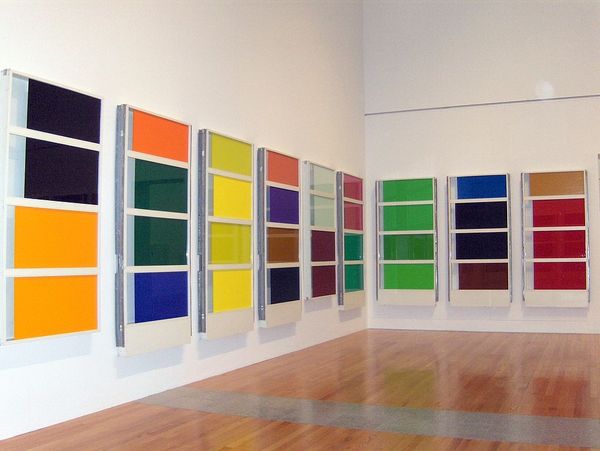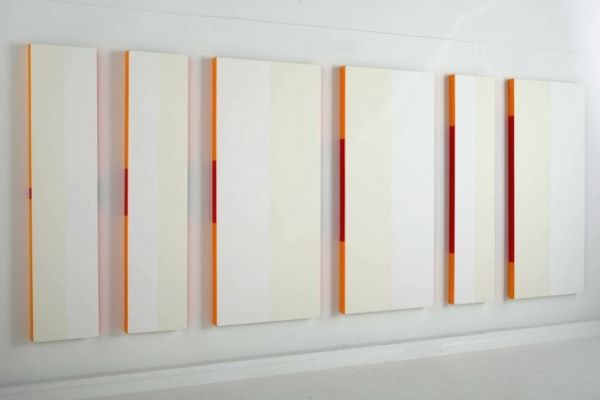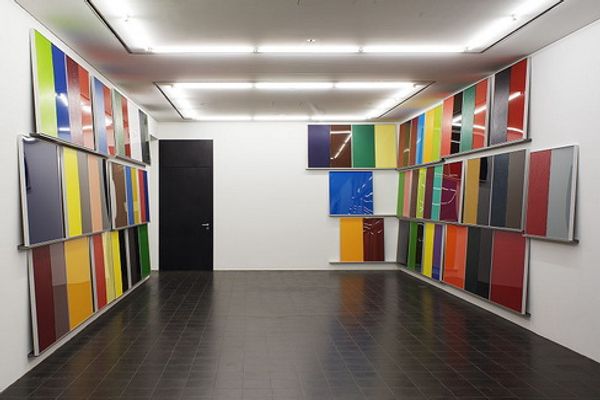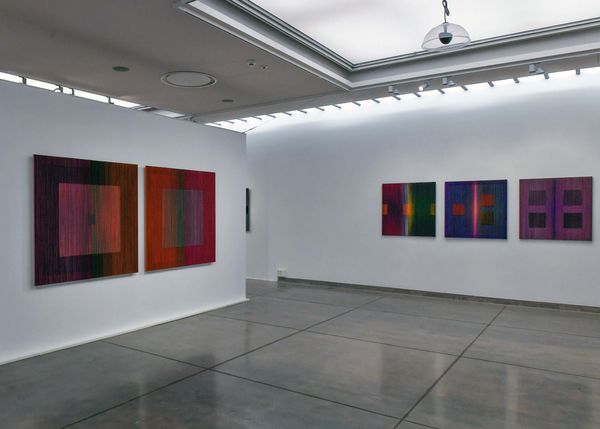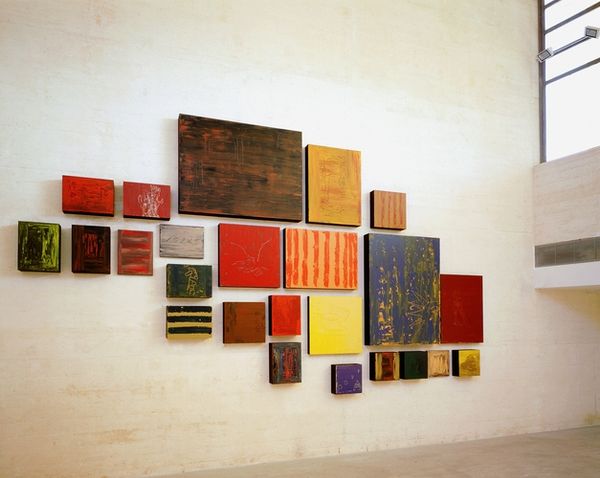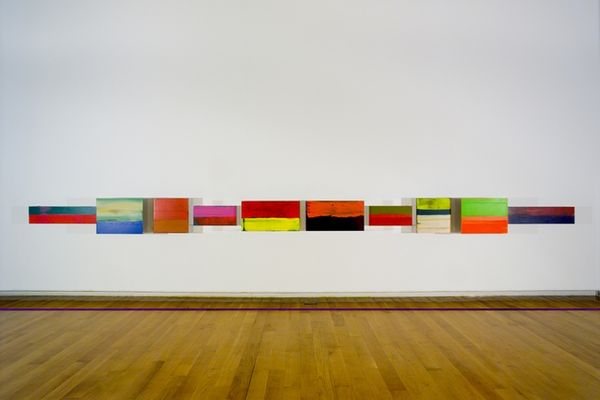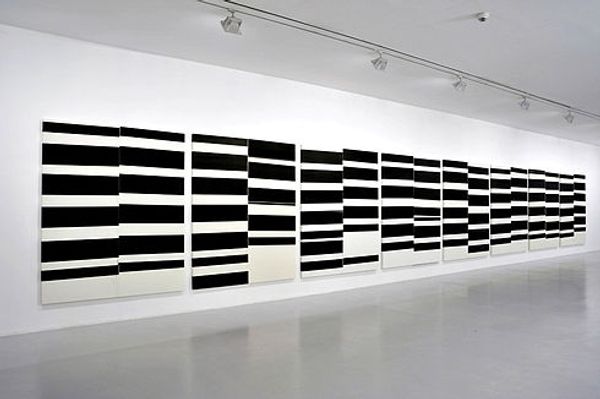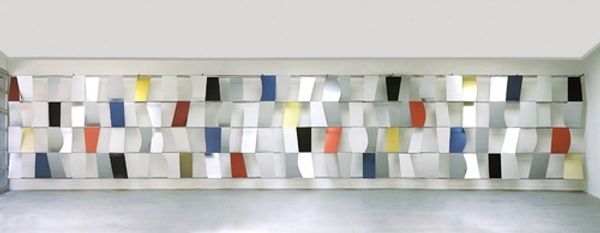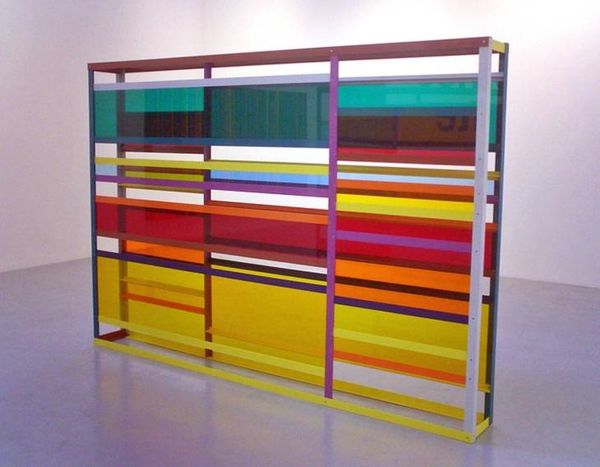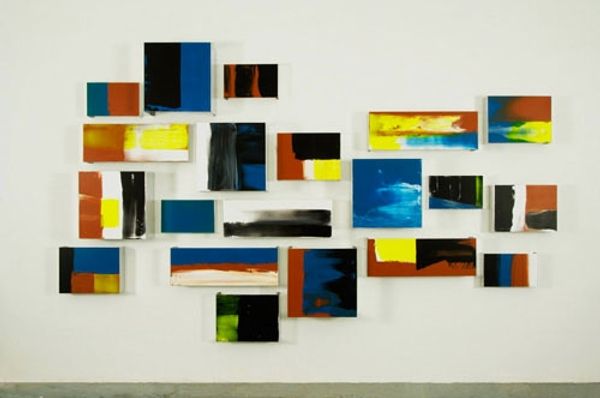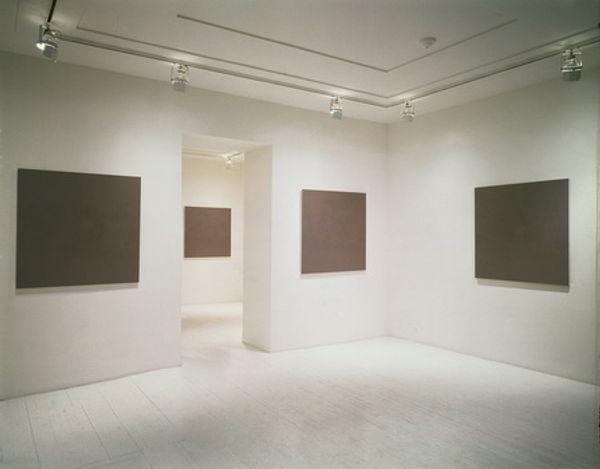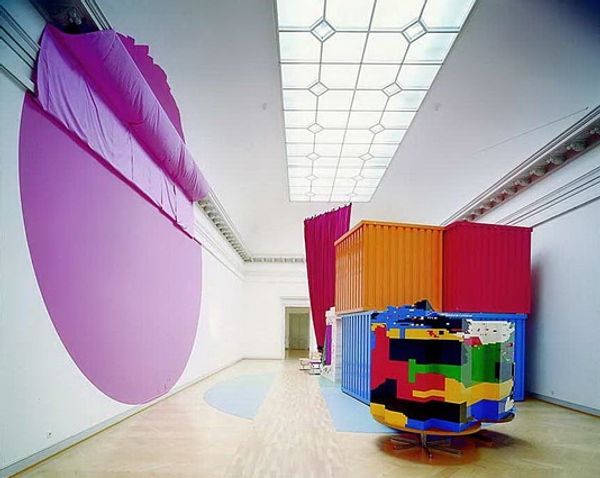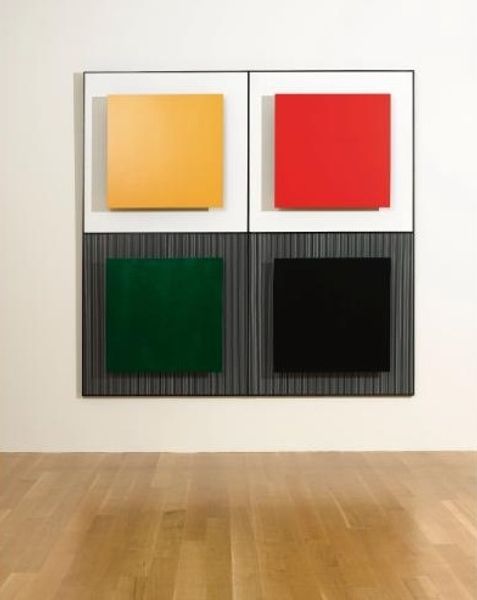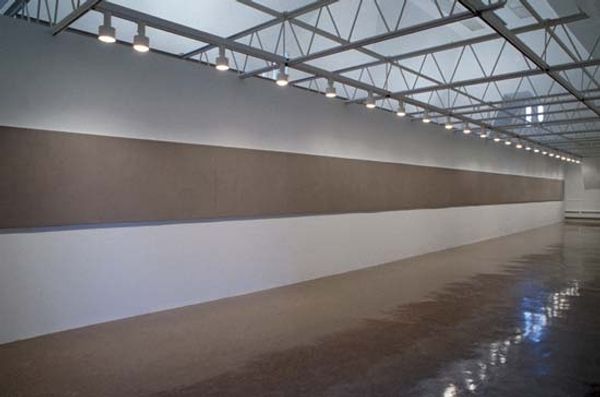
Wall Drawing No. 681 C / A wall divided vertically into four equal squares separated and bordered by black bands. Within each square, bands in one of four directions, each with color ink washes superimposed. 1993
0:00
0:00
drawing
#
drawing
#
conceptual-art
#
minimalism
#
geometric
#
abstraction
#
line
Dimensions: image (size of installed drawing): 304.8 x 1127.8 cm (120 x 444 in.)
Copyright: National Gallery of Art: CC0 1.0
Editor: This is Sol LeWitt's "Wall Drawing No. 681 C" from 1993. It's a vibrant series of color ink washes applied to a wall divided into four squares. I'm struck by how the simple act of changing the direction of the lines completely alters the mood of each panel. What do you see in this piece? Curator: The bands remind me of threads or the warp and weft of woven fabric, drawing a line, as it were, through traditions of art, design, and craft. These colorful arrangements appear like flags of differing nations unified into a single composition by the black bands holding it all together. What feelings might be evoked through the symbol of a unified series of colorful flags? Editor: That's interesting. I was mainly thinking about the formal elements – color and composition – but your interpretation adds another layer. The flags could represent a sort of global harmony, or maybe the tension between individuality and unity. The diagonal lines especially feel like they're pulling outwards. Curator: Consider then how LeWitt, like Byzantine iconographers who prescribe specific images in prescribed forms, supplies the plan and the colours for each component but relies on draftsmen to actually produce the artwork on the wall. To what extent does his artistic authorship derive from conception versus execution? Editor: So it's like a set of instructions, a code almost, and each realization of the "Wall Drawing" is a unique interpretation of that code. Does that mean that, like flags, the wall drawing can carry distinct messages, based on the site, the community, and even the individuals realizing it? Curator: Precisely! The constant being the concept. As new contexts appear, new expressions of cultural memory and experience get painted onto the "canvas" of LeWitt's symbolic syntax. It reveals a network of ever-evolving symbolic potential that has continued across many eras. Editor: Wow, I'll never look at Minimalism the same way again. Seeing it connected to history and cultural identity… it really opens up the piece.
Comments
No comments
Be the first to comment and join the conversation on the ultimate creative platform.
